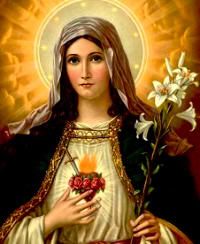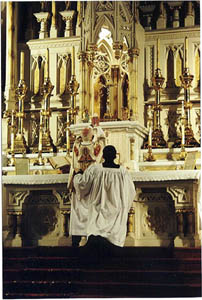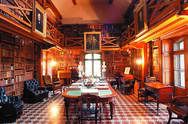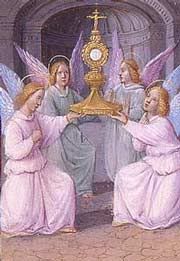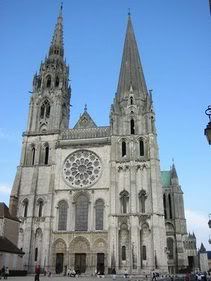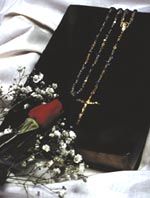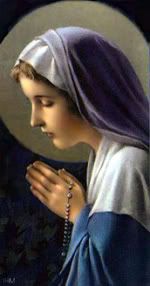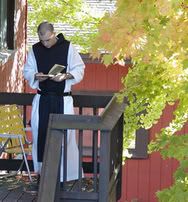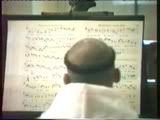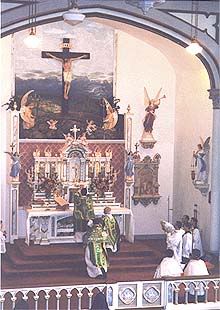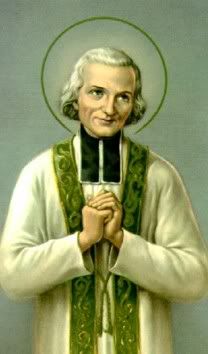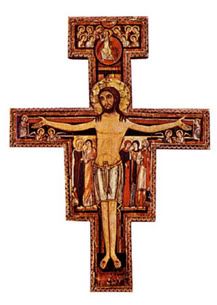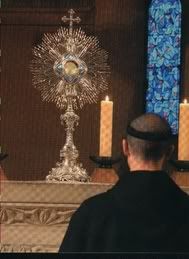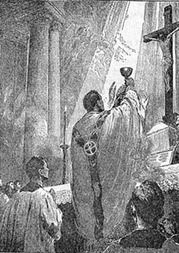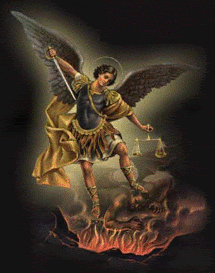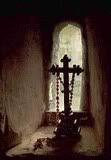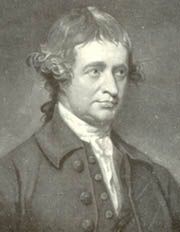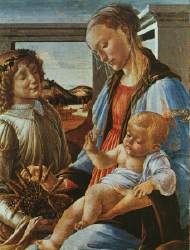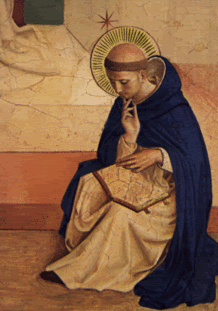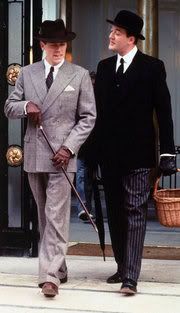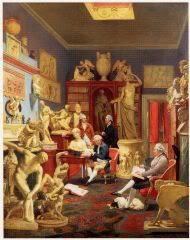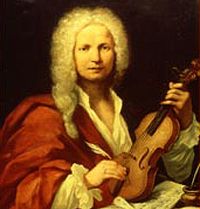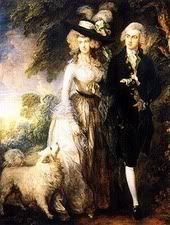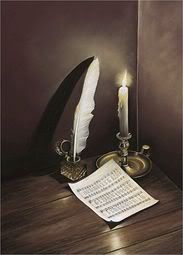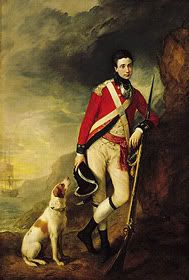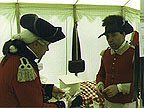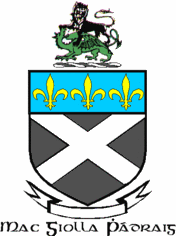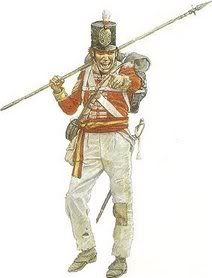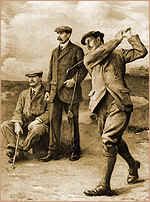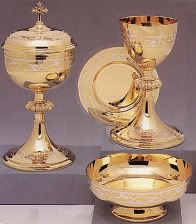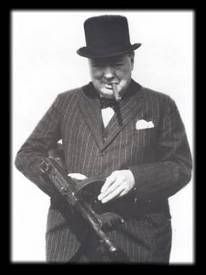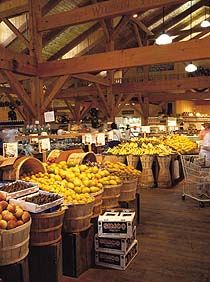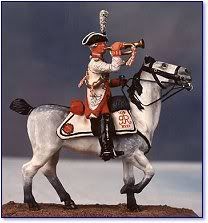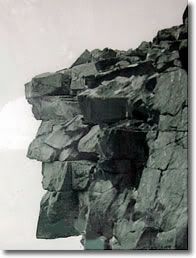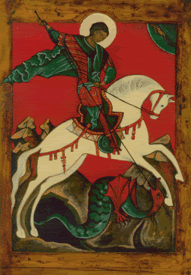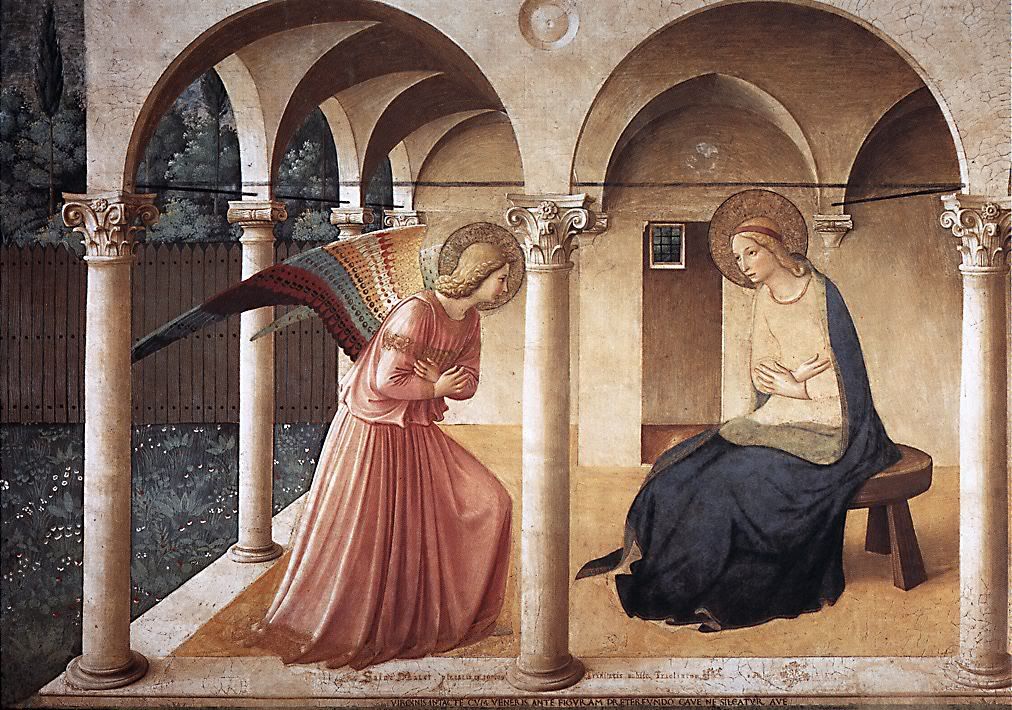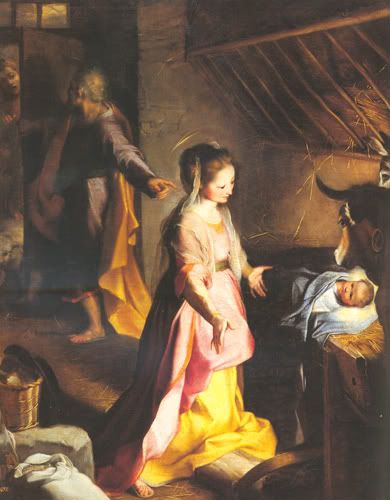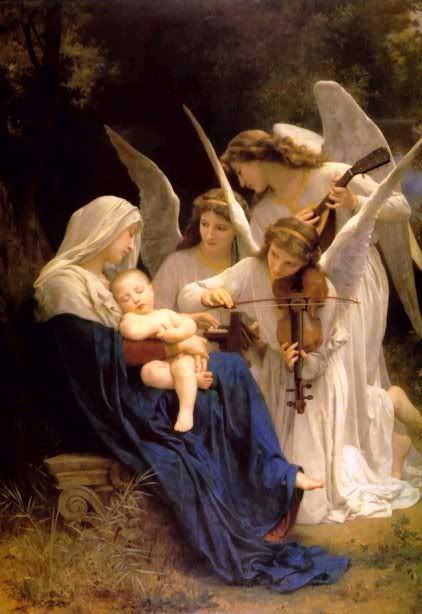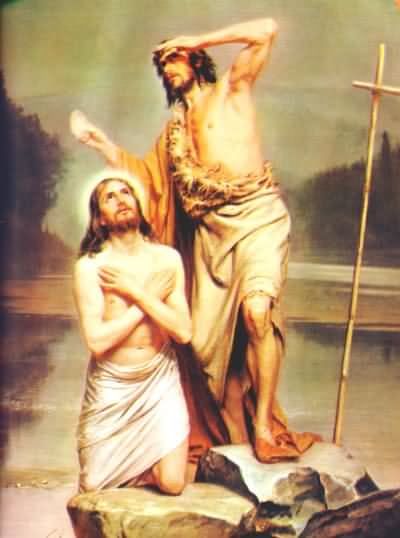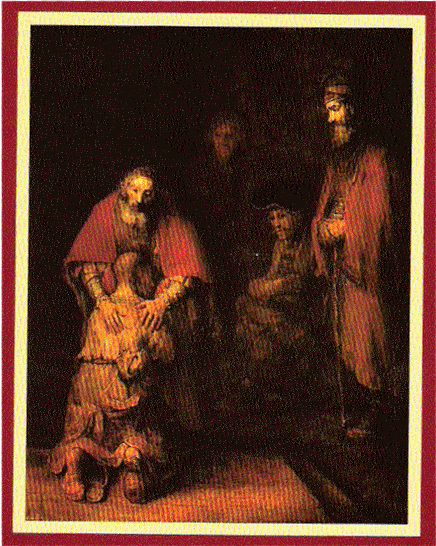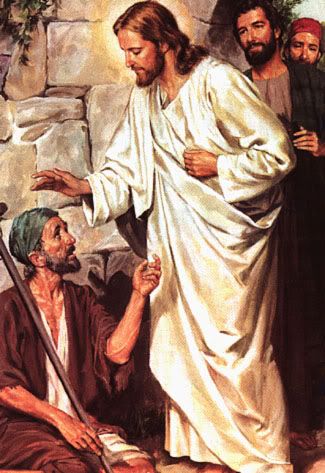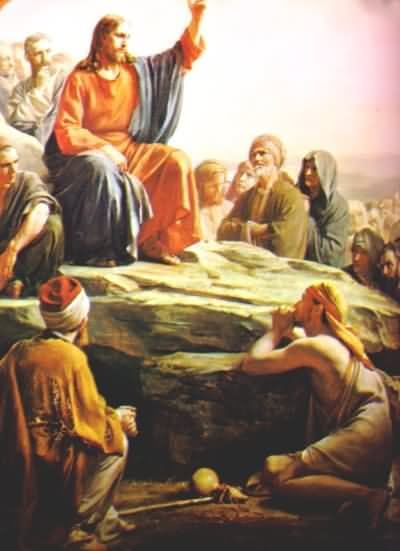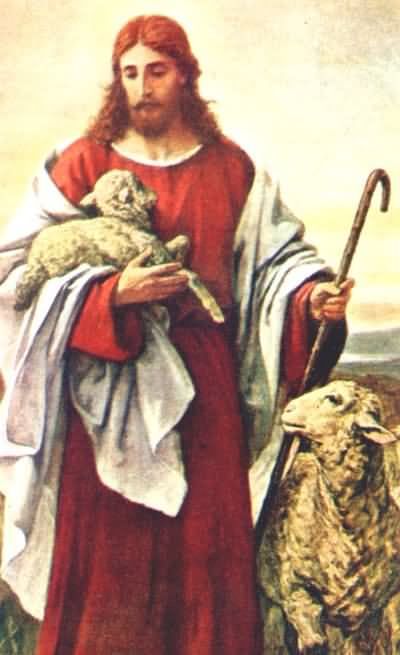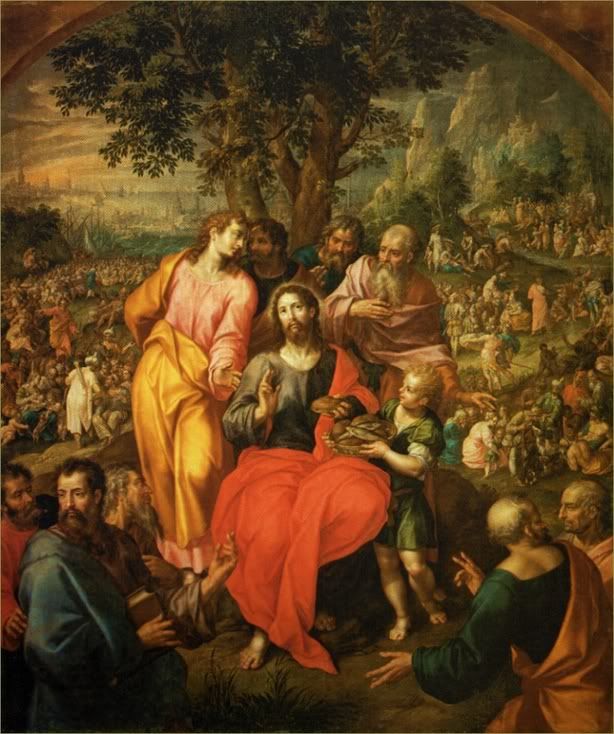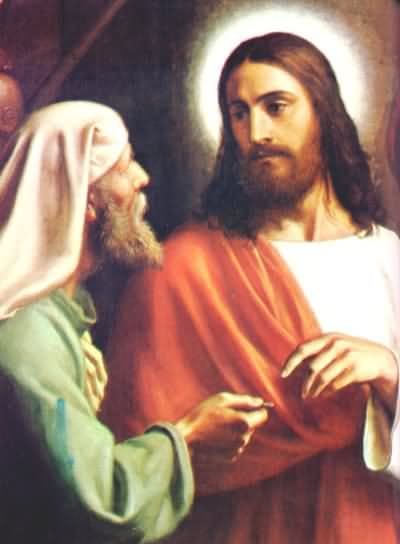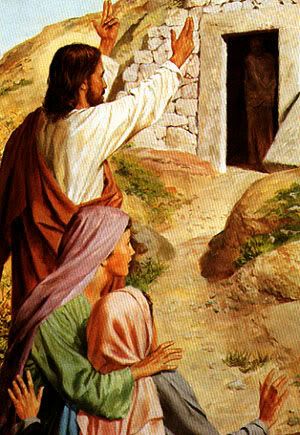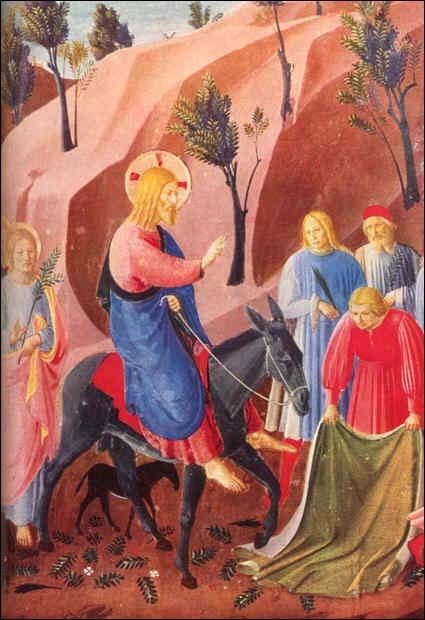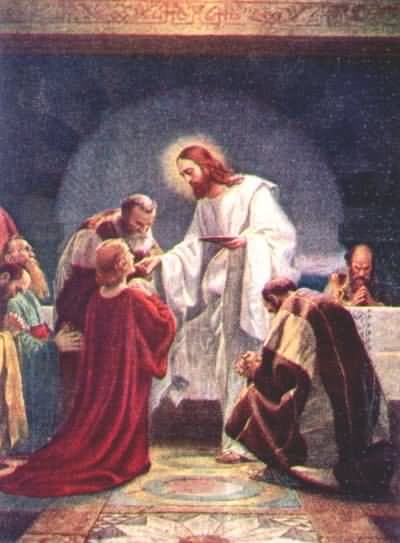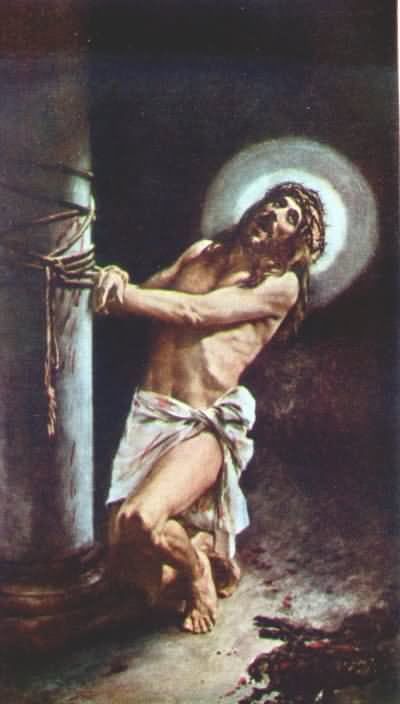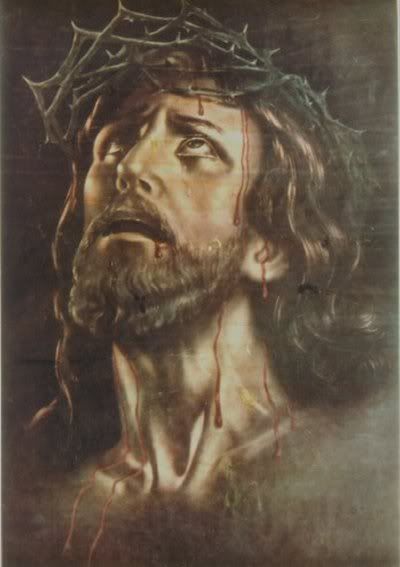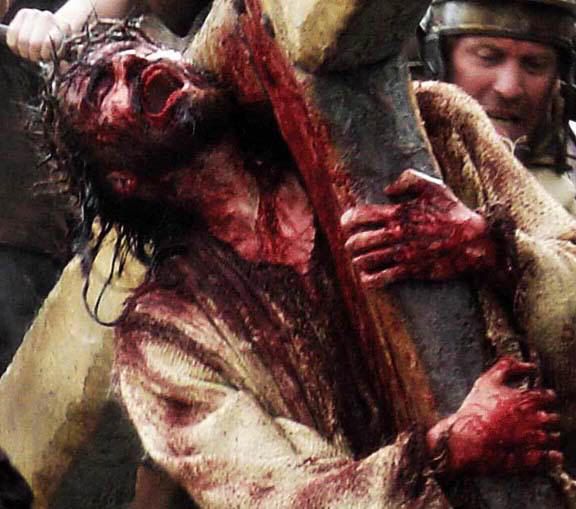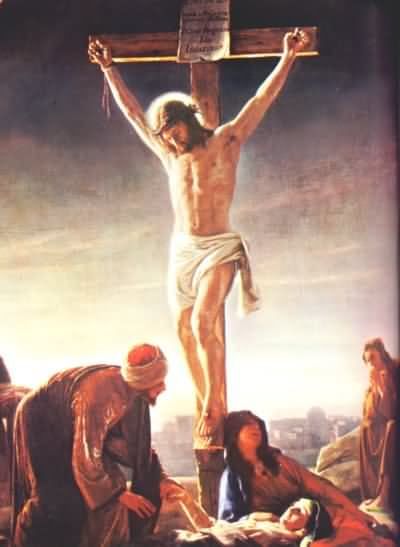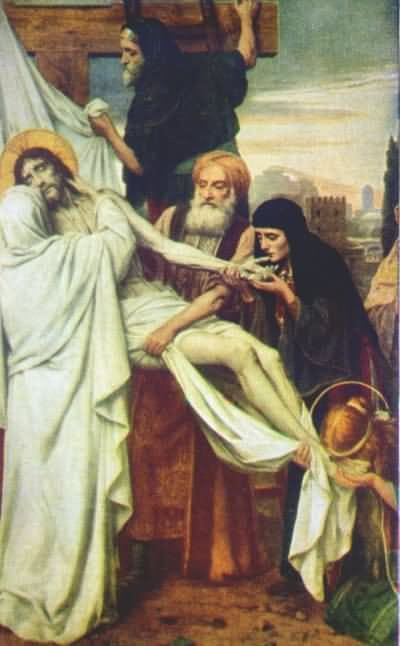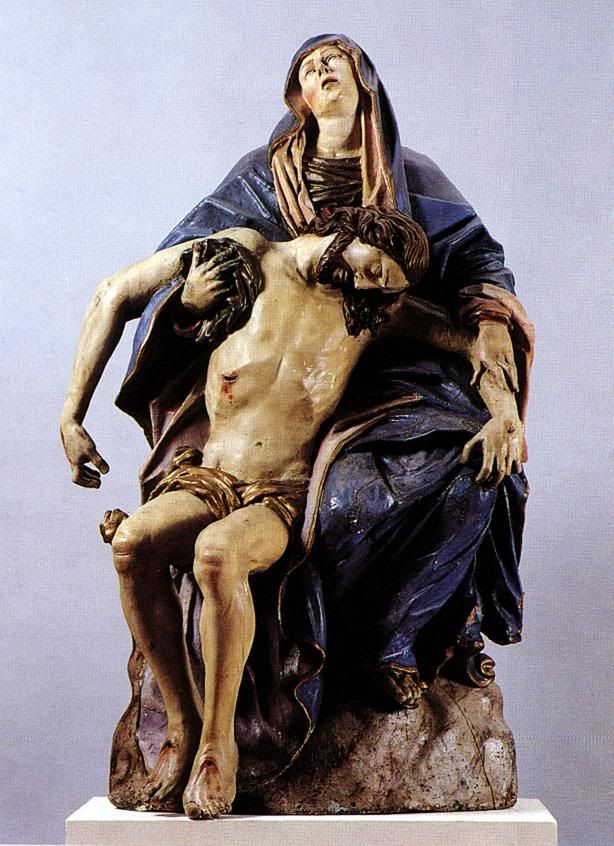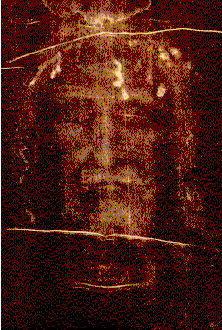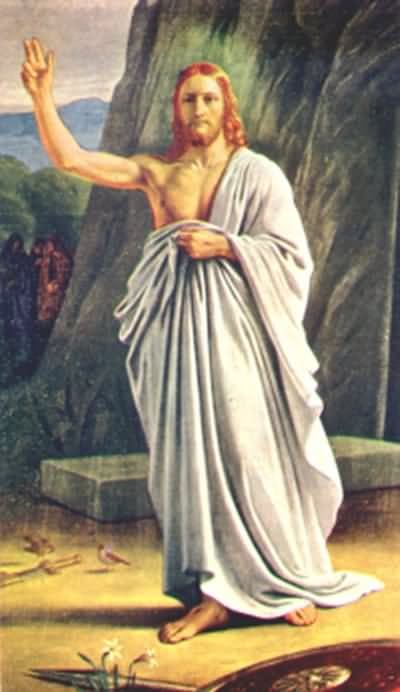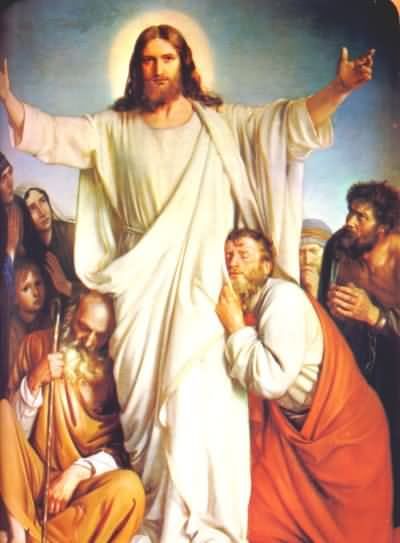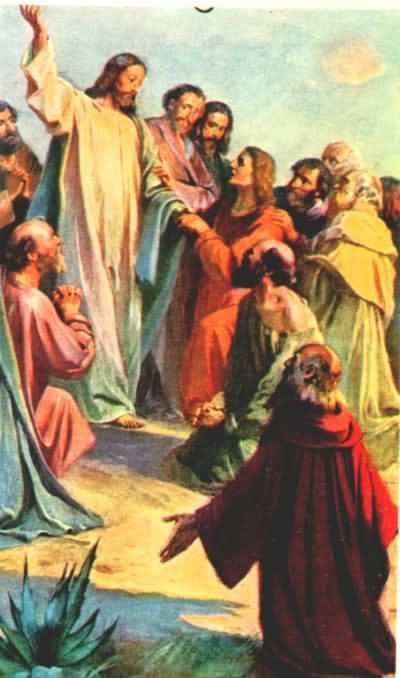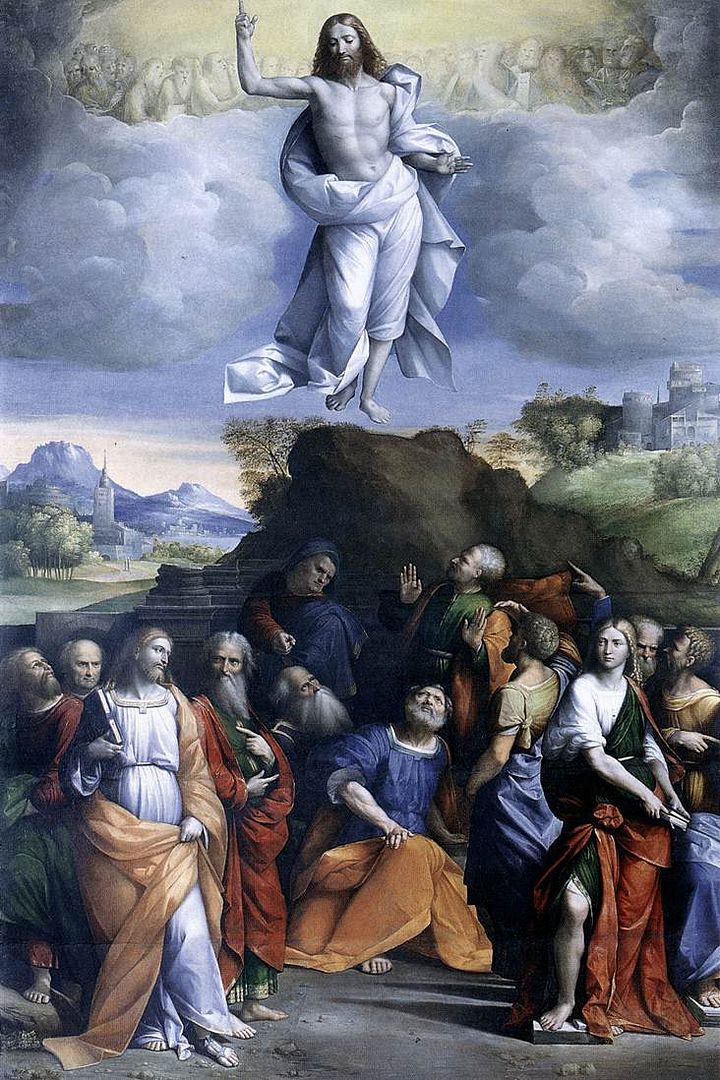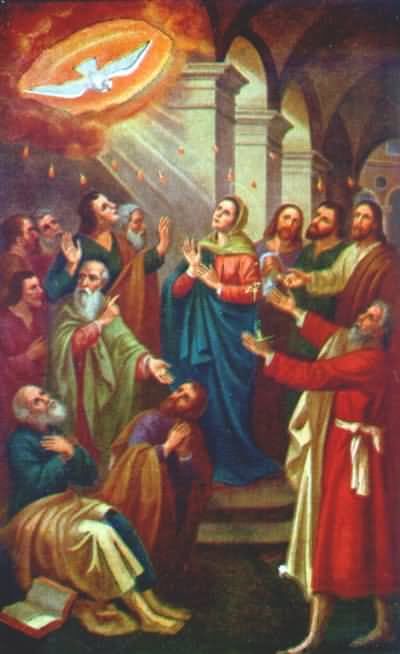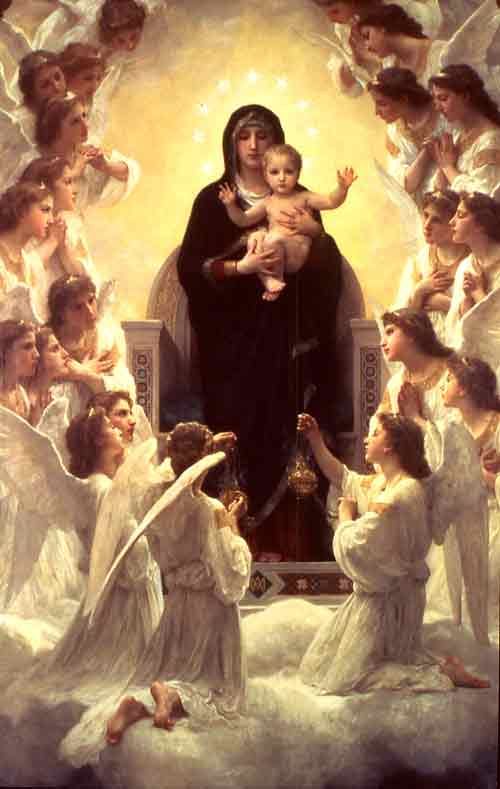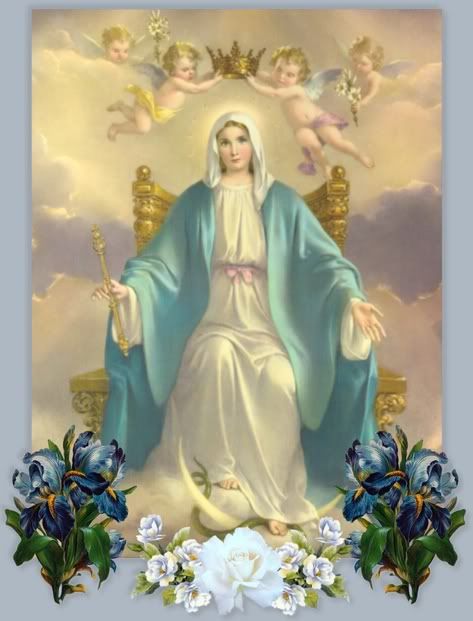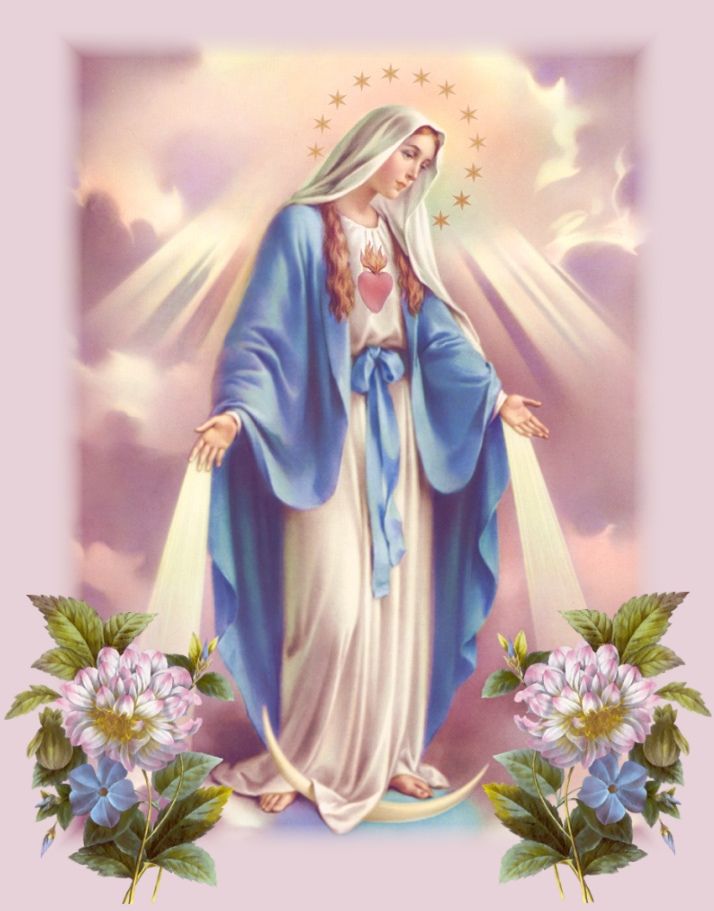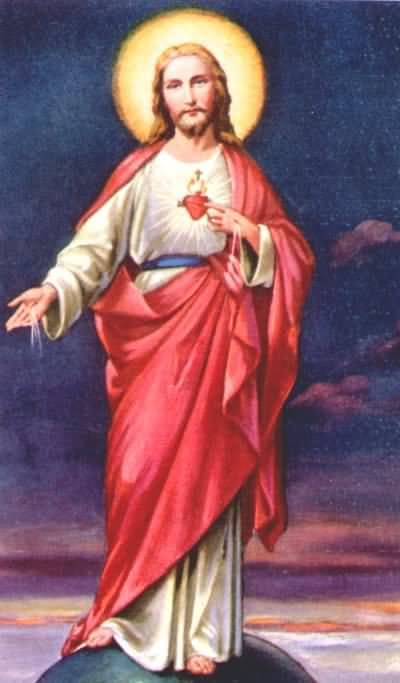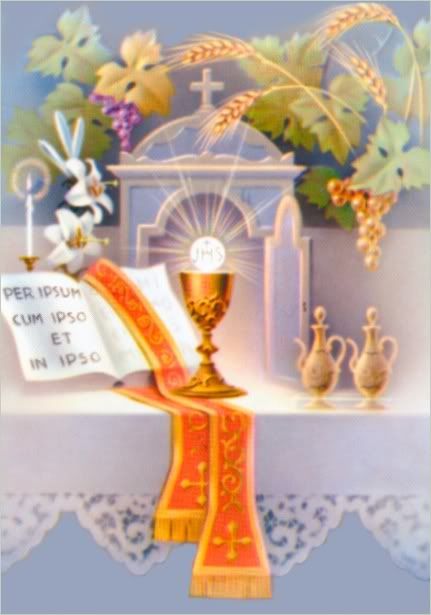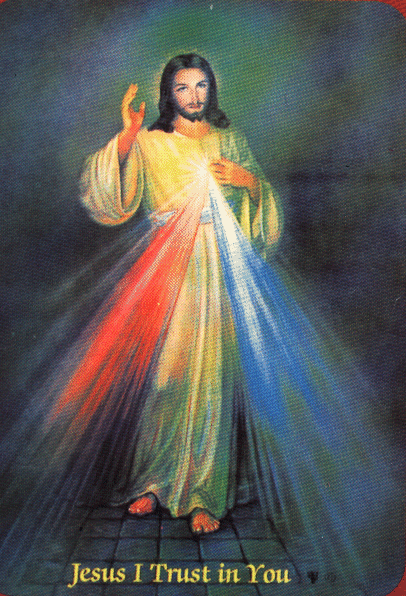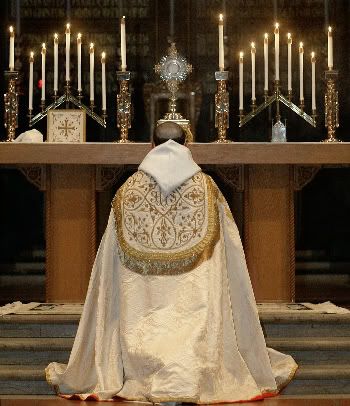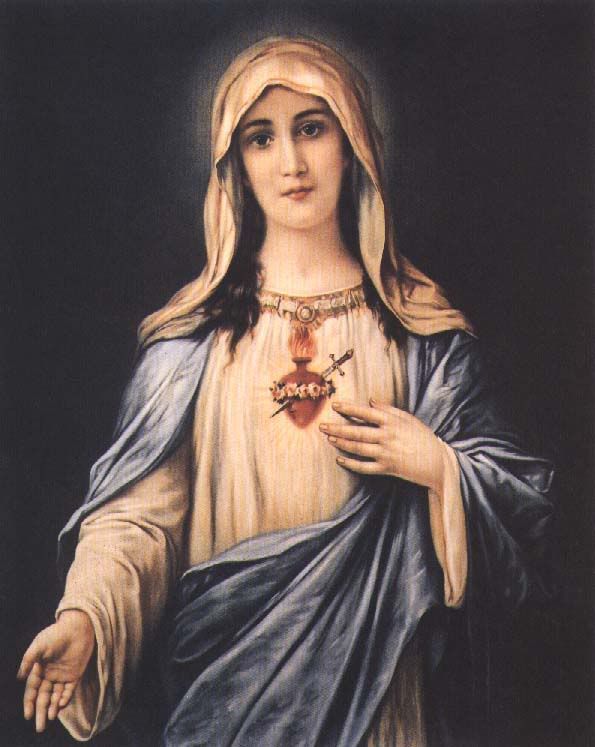Saturday, December 16, 2006
Reminder
The "O" Antiphons of Advent begin tomorrow, which is also Gaudete Sunday. And next week is the Advent Embertide.
Sixty-Second Anniversary Of the Start of the Battle Of the Bulge
My post from last year's anniversary.

American M-10 tank destroyers utilized for indirect artillery fire at night.

King Tiger tank abandoned by the German spearhead Kampfgruppe Pieper when they ran out of gas

American M-10 tank destroyers utilized for indirect artillery fire at night.

King Tiger tank abandoned by the German spearhead Kampfgruppe Pieper when they ran out of gas
Celebrating the Whole Twelve Days of Christmas
I don't know about you, but I find it depressing when the Christmas music stops and folks start tossing the Christmas trees on the curb on December 26th. Agreed, some of these people are about to take off for Florida for the rest of the winter, and so have to get rid of the tree before they do. But we as Catholics ought to make more of the Twelve Days, and make our joy at the Nativity and the related events of the early life of the Lord last through Epiphany. In Catholic countries like Poland, it is not uncommon for Christmas decorations and music to last through Candlemas on February 2nd,
Here are some practical suggestions for keeping the spirit of Christmas active in your home throughout the season.
Make every evening meal during the Christmas period special, even if it is leftovers. The leftovers from Christmas Dinner can be served in some style, and with a little more than the ordinary degree of pomp. Continue to use the Christmas china, if you have a set (pick a pattern with holly and ivy and red bows, rather than a Santa Claus pattern, which is useless on December 26th). Christmas foods are special foods, and there is always more than can be consumed in a single meal. Turkey, ham, roast beef, pork roast (whatever you have Christmas Eve and Christmas Day) can be refrigerated or frozen, and served again during the festival. Mince pie, plum pudding, and fruitcake keep well. Eggnog will keep for up to a week. If you have more red wine than you needed for dinner, mull the letovers and drink it over the days of Christmas. Christmas punch can last much longer. Plan more special meals for the special days: Christmas Eve and Day, St. Stephen's Day, St. John's Day, the Holy Innocents, New Year's Eve, New Year's Day, Twelfth Night, and Epiphany.
Stay home on the more important evenings of Christmas and make those days family time. Reigning in the teenagers can be hard. But if you give them a reason, they might stay home and invite their friends. Play games. There are plenty of board and card games that are great fun, depending on the size of the family. Phase Ten and Uno are great games for small groups. Then there are parlor games, like Yes and No and the Minister's Cat, which are great for small children or tolerant adults. Charades, Musical Chairs, and many other pasttimes can make the evening fun. If you must watch something, try comedies. The Mikado by Gilbert and Sullivan is a lot of fun.
Get the family out to something like a magic show, or a family-friendly farce on at least one of the nights of Christmas. Maybe a local company is doing a production of The Tempest or Twelfth Night, or A Man For All Seasons. Then there are often movies like The Return of the King that are out at Christmas.
Light candles every night during Christmas. The Advent Wreath can be tucked away, or its purple and pink candles replaced with white or red, but other candles help to give the house a homey feeling. What are really great are the scented candles in jars. Sometimes, the most expensive brand does not give the best scent. Shop around.
Use Christmas potpourri in the house throughout the holidays. Even if it is just cinnamon sticks and whole cloves in water simmering on the stove, such scents can really make the house feel like the holidays. Then there are the bags of potpourri to be left in bowls about the house. Some of these are really nice, some less so. Generally, you get what you pay for. A bag of potpurri purchased at the Williamsburg shop in Salem some years ago for $12 was terrific, much better than what you pay $5 for at Christmas Tree Shops.
Attend Mass frequently during the holidays. If the kids are home, troop them along for daily Mass if you can. Even if you can't make Mass, just stop by a Church that is open and make a Eucharistic visit. Certainly make sure the family attends together on the Sundays and important feast days. You can also make mini-pilgrimaghes to area Catholic churches to visit the various nativity displays. Historically, in the French Quarter of New Orleans, this was a favorite Christmas Day activity.
Put some money aside to spend during the Twelve Days. This is an idea I have advanced before, the Twelve Hundred Dollars of Christmas. On each of the 12 days after Christmas, allot $100 (or $10 if you are strapped) to spend on some category of product. On Saint Stephen's Day, you can pick up nativity sets, wrapping paper, cards, tags, bows, candles, hard candies that will keep, lights, ornaments, etc. on deep discounts (50% off is common). A hundred dollars spent on December 26th for next year is often a good investment. Then spend $100 on books on another day. Some other day, spend $100 at the local Catholic goods store. Another day, give $100 to the local food pantry. You get the idea. It is a little materialistic, or can be, depending on how you spend it. But it does keep off the post-Christmas Blues.
Keep the decorations up. OK the tree looks dorky and you look lazy if it is still up at Super Bowl time. Use Plough Monday, the Monday after the Twelfth Day, as the day for taking down the decorations. And decorate with a lavish hand. Christmas is no time for restraint. Put interlaced garlands of holly and ivy around every doorway. Use plenty of mistletoe. Use pine garlands. Doesn't matter if they are silk or PVC. In fact, artificial is much better, as it can be kept up longer. Collect an elaborate Nativity set over several years, like those sold by Fontanini. Even better, have some kind of Nativity set in every room of the house. And leave it all in place until after Epiphany (real Epiphany, not liturgical Epiphany, moved to the closest Sunday for convenience) is past.
Play Christmas music throughout. Santa songs are passe after December 24th. But build a collection of Christmas music that is less secular. The Church continues to use carols until Epiphany. Why not us, too? The Boston Camerata has several albums to pick from. Ditto the Revels (links on the side). Then thee are albums of Christmas chants and motets. And there is Bach's Christmas Oratorio, and Handel's Messiah. Want to know a secret? Jingle Bells is my least favorite Christmas song. I find it refreshing, after December 25th, to listen to albums of Christmas music that do not contain any references to sleighs, Santa, and reindeer.
Here are some practical suggestions for keeping the spirit of Christmas active in your home throughout the season.
Make every evening meal during the Christmas period special, even if it is leftovers. The leftovers from Christmas Dinner can be served in some style, and with a little more than the ordinary degree of pomp. Continue to use the Christmas china, if you have a set (pick a pattern with holly and ivy and red bows, rather than a Santa Claus pattern, which is useless on December 26th). Christmas foods are special foods, and there is always more than can be consumed in a single meal. Turkey, ham, roast beef, pork roast (whatever you have Christmas Eve and Christmas Day) can be refrigerated or frozen, and served again during the festival. Mince pie, plum pudding, and fruitcake keep well. Eggnog will keep for up to a week. If you have more red wine than you needed for dinner, mull the letovers and drink it over the days of Christmas. Christmas punch can last much longer. Plan more special meals for the special days: Christmas Eve and Day, St. Stephen's Day, St. John's Day, the Holy Innocents, New Year's Eve, New Year's Day, Twelfth Night, and Epiphany.
Stay home on the more important evenings of Christmas and make those days family time. Reigning in the teenagers can be hard. But if you give them a reason, they might stay home and invite their friends. Play games. There are plenty of board and card games that are great fun, depending on the size of the family. Phase Ten and Uno are great games for small groups. Then there are parlor games, like Yes and No and the Minister's Cat, which are great for small children or tolerant adults. Charades, Musical Chairs, and many other pasttimes can make the evening fun. If you must watch something, try comedies. The Mikado by Gilbert and Sullivan is a lot of fun.
Get the family out to something like a magic show, or a family-friendly farce on at least one of the nights of Christmas. Maybe a local company is doing a production of The Tempest or Twelfth Night, or A Man For All Seasons. Then there are often movies like The Return of the King that are out at Christmas.
Light candles every night during Christmas. The Advent Wreath can be tucked away, or its purple and pink candles replaced with white or red, but other candles help to give the house a homey feeling. What are really great are the scented candles in jars. Sometimes, the most expensive brand does not give the best scent. Shop around.
Use Christmas potpourri in the house throughout the holidays. Even if it is just cinnamon sticks and whole cloves in water simmering on the stove, such scents can really make the house feel like the holidays. Then there are the bags of potpourri to be left in bowls about the house. Some of these are really nice, some less so. Generally, you get what you pay for. A bag of potpurri purchased at the Williamsburg shop in Salem some years ago for $12 was terrific, much better than what you pay $5 for at Christmas Tree Shops.
Attend Mass frequently during the holidays. If the kids are home, troop them along for daily Mass if you can. Even if you can't make Mass, just stop by a Church that is open and make a Eucharistic visit. Certainly make sure the family attends together on the Sundays and important feast days. You can also make mini-pilgrimaghes to area Catholic churches to visit the various nativity displays. Historically, in the French Quarter of New Orleans, this was a favorite Christmas Day activity.
Put some money aside to spend during the Twelve Days. This is an idea I have advanced before, the Twelve Hundred Dollars of Christmas. On each of the 12 days after Christmas, allot $100 (or $10 if you are strapped) to spend on some category of product. On Saint Stephen's Day, you can pick up nativity sets, wrapping paper, cards, tags, bows, candles, hard candies that will keep, lights, ornaments, etc. on deep discounts (50% off is common). A hundred dollars spent on December 26th for next year is often a good investment. Then spend $100 on books on another day. Some other day, spend $100 at the local Catholic goods store. Another day, give $100 to the local food pantry. You get the idea. It is a little materialistic, or can be, depending on how you spend it. But it does keep off the post-Christmas Blues.
Keep the decorations up. OK the tree looks dorky and you look lazy if it is still up at Super Bowl time. Use Plough Monday, the Monday after the Twelfth Day, as the day for taking down the decorations. And decorate with a lavish hand. Christmas is no time for restraint. Put interlaced garlands of holly and ivy around every doorway. Use plenty of mistletoe. Use pine garlands. Doesn't matter if they are silk or PVC. In fact, artificial is much better, as it can be kept up longer. Collect an elaborate Nativity set over several years, like those sold by Fontanini. Even better, have some kind of Nativity set in every room of the house. And leave it all in place until after Epiphany (real Epiphany, not liturgical Epiphany, moved to the closest Sunday for convenience) is past.
Play Christmas music throughout. Santa songs are passe after December 24th. But build a collection of Christmas music that is less secular. The Church continues to use carols until Epiphany. Why not us, too? The Boston Camerata has several albums to pick from. Ditto the Revels (links on the side). Then thee are albums of Christmas chants and motets. And there is Bach's Christmas Oratorio, and Handel's Messiah. Want to know a secret? Jingle Bells is my least favorite Christmas song. I find it refreshing, after December 25th, to listen to albums of Christmas music that do not contain any references to sleighs, Santa, and reindeer.
Thursday, December 14, 2006
Requiescat In Pace
Actor Peter Boyle, who I know as the Monster in Young Frankenstein, died of heart disease at the age of 71. He was a former Christian Brothers monk, I see. Requiescat in pace.
A New City Hall For Boston?

This ugly heap which squats atop Boston's City Hall Plaza, next door to the not-so-hot-either JFK Federal Building is Boston's City Hall. Built in the (you guessed it) 1960s, it is described as a prime example of "brutal deconstructionism" in architecture.
Well, Mumbles Menino, currently Mayor of Boston, and inspiration for the way Fred Flintstone is drawn, wants to sell this wretched pile and the 9 acre plot called Government Center, a vast cheerless expanse of brick that is so wind-swept you could make it the home of a wind farm that would power the entire Northeast. And he wants to move City government to the South Boston waterfront (the Federal courts quartered in Boston have already moved there).
Of course this is a huge boondoogle of an idea. A way to pack the payroll with hundreds of hacks while building a legacy (I guess the rapidly escalating murder rate in the city the last two years is not the sort of legacy Mumbles has in mind).
But, you know, I deal a lot with tourists. And I hear lots of comments from people from all over the country. And one of the recurring themes I hear is that the current city hall, the thing in the photo above, is so unimaginably ugly for a city with such a legacy of great architecture. It is a festering wart on the face of Boston. And a tribute to the insanity of "modern' architecture.
Compare it to the perfectly adequate Old City Hall, built during the Civil War:

By comparison, it is quite an eyesore, and I am ready to be shot of it, even if it means jobs for a whole new generation of hacks. After all, the state just gave itself lock, stock, and barrel over to the Democrats. Let them do as they please, since they will anyway. And if they are not hiring friends of friends and idiot brothers-in-law to staff the construction of the new city hall and the transportation links that it will require, they will hire them for something else. There is nothing to stop them. And at least we have the chance of a more palatable City Hall on the waterfront, and something nicer rising from the rubble of Scollay Square (dare we hope that the old name for what is currently dubbed "Government Center") will be revived?
Addams Family Christmas

Just Tuesday, I was looking at a giant compendium of New Yorker cartoons. And I came across a few Addams Family Christmas cartoons. I noticed that they predated the TV series.
Then, this morning, I saw that Mark Sullivan had posted a link with more of them.
So I guess I was meant to blog about this.
The Dice Man Cometh
For a mere 103.1 million dollars.
Julio Lugo, J.D. Drew, Matsuzaka, word that John Lester is now cancer-free, Doug Mirabelli and Alex Cora returning. Not a bad month for the Red Sox, though a very expensive one. And they still don't have a closer.
Julio Lugo, J.D. Drew, Matsuzaka, word that John Lester is now cancer-free, Doug Mirabelli and Alex Cora returning. Not a bad month for the Red Sox, though a very expensive one. And they still don't have a closer.
Tridentine High Mass Photos

From the 20th Anniversary of New Haven's St. Gregory Society.
Courtesy of The New Liturgical Movement
I was there for this one. Sacred Heart church is by no means as lovely as Boston's Holy Trinity, but that still makes it more beautiful than 97% of other Catholic churches.
More Details On the Ecclesia Dei Commission Meeting
From Rorate Caeli.
Wednesday, December 13, 2006
Sox Going Down To the Wire With Matsuzaka
First Car Nostalgia
I was thinking about my first car, purchased in the summer between my graduation from high school and matriculation at college. It was the summer of 1982, and the car was a 1979 Ford T-Bird, which allegedly had around 25,000 miles on it. It was my "commuter car" which saw me through college and 2/3 of law school.


Mine was grey, with a narrow red racing stripe down the sides, and wire "spoke" hubcaps. It had AC and a cassette player.
"And he had fun, fun fun, 'til neglecting oil changes took his T-Bird away."


Mine was grey, with a narrow red racing stripe down the sides, and wire "spoke" hubcaps. It had AC and a cassette player.
"And he had fun, fun fun, 'til neglecting oil changes took his T-Bird away."
Favorite Christmas CDs
Chip Davis, Renaissance Holiday
The Chieftans, The Bells of Dublin
Emily Mitchell, Celtic Christmas
The Harry Simeone Chorale, The Little Drummer Boy (the original, with all religious carols)
The Revels, Victorian Christmas Revels
Mannheim Steamroller, A Mannheim Steamroller Christmas/Fresh Aire Christmas/Christmas In the Aire All three rock: the first the most. I don't like their newer Christmas CDs as well as these first three.
Bing Crosby, White Christmas
The Boston Camerata, A Medieval Christmas/A Renaissance Christmas/A Baroque Christmas (again, all three are great)
Vince Guaraldi Trio, A Charlie Brown Christmas (the original soundtrack but with some additions)
Perry Como, A Perry Como Christmas (a wonderful recording of Schubert's Ave Maria)
Gregorian Christmas Chants and Motets So you can play Christmas music in November, or July, and no one will be the wiser.
Last year, I listened to Anne Murray's new (2001) Christmas album. I liked it. There was a preponderance of religious songs, but she had the entire traditional Santa/Rudolph grouping at the start of disc 2.
The Chieftans, The Bells of Dublin
Emily Mitchell, Celtic Christmas
The Harry Simeone Chorale, The Little Drummer Boy (the original, with all religious carols)
The Revels, Victorian Christmas Revels
Mannheim Steamroller, A Mannheim Steamroller Christmas/Fresh Aire Christmas/Christmas In the Aire All three rock: the first the most. I don't like their newer Christmas CDs as well as these first three.
Bing Crosby, White Christmas
The Boston Camerata, A Medieval Christmas/A Renaissance Christmas/A Baroque Christmas (again, all three are great)
Vince Guaraldi Trio, A Charlie Brown Christmas (the original soundtrack but with some additions)
Perry Como, A Perry Como Christmas (a wonderful recording of Schubert's Ave Maria)
Gregorian Christmas Chants and Motets So you can play Christmas music in November, or July, and no one will be the wiser.
Last year, I listened to Anne Murray's new (2001) Christmas album. I liked it. There was a preponderance of religious songs, but she had the entire traditional Santa/Rudolph grouping at the start of disc 2.
My Favorite Christmas Movies
The Gathering
Ed Asner stars as an estranged husband and father who finds out he has very little time to live just before Christmas. This movie is just chock full of scenes depicting preparations for Christmas, and Christmas being celebrated in the grand style in a wealthy household (they even have a pet protestant minister who drops everything on an hour's notice to baptize a child at their home on Christmas Day). Ultimately this is a very heart-warming movie, though you have to blot out the "Vietnam was wrong undertone" and some 1970s clothing styles. Sadly, this movie is not currently available on VHS or DVD. Watch the cable listings (Fox used to carry it, or try the Hallmark Channel) and tape it. Amazon has some used copies, I see.
Scrooge
This musical version of A Christmas Carol has some problems. For Lord-knows-what reason the producers decided to set it in 1860 (the book was written in the early 1840s) so the costumes are wrong. Albert Finney is a convincing Scrooge, but for some reason portrayed him as a recovered stroke victim. Alec Guiness has a unique interpretation of Jacob Marley. Kenneth More is very good as the Ghost of Christmas Present, but the beard he wears is rather cheesy. I think the actors who played Scrooge's nephew Fred and Bob Crachit are the best of all the versions I have watched. The atmosphere of this rendition is terrific. You feel as if you had stepped into Victorian London at Christmas time. The song "December the 25th" is a classic, as is "Thank You Very Much."
The Homecoming
This was the pilot for The Waltons. All the children reprised their roles in the TV series. I never cared for Patricia Neal, who plays Olivia. Andrew Duggan is not credible as John Walton (not after getting used to Ralph Waite). But this depiction of a Depression-era Christmas is moving nonetheless. And I grew up with it.
Jingle All The Way
I saw this for the first time a couple of years ago and laughed myself into coughing fits. Arnold Schwarzenegger plays a stressed out dad trying to get that special toy for his son at the last minute. As an uncle who still bears the scars of the Cabbage Patch doll craze, this movie resonated. Is it me, or is there no super-hard-to-find toy this year?
A Christmas Story
This is an adaptation of one of Jean Sheperd's works. Little Ralphie wants a Red Rider BB Gun for Christmas. Everyone tells him he'll shoot his eye out with it. The movie has a lot of what it felt like to be a kid at Christmas. Darren McGavin was a little old for the role of the father, but otherwise perfect.
Miracle On 34th Street
There was a nice rendition in the 1970s, but you have to watch the original. Macy's Santa Claus turns out to be the real thing, but the Macy's psychiatrist wants to send him to the looney bin. The interplay between the judge and his political advisor (played by the guy who played Fred Mertz on I Love Lucy) is great.
It's A Wonderful Life
Frank Capra tells us the tale of George Bailey and the Building and Loan of Bedford Falls. Jimmy Stewart is absolutely terrific as Bailey. It would not be Christmas without an evening looking at the life of George and Mary Bailey and rejoicing at his vindication. "No man is a failure as long as he has friends."
The Gift of Love: A Christmas Story
Oh, no, you say. Not another glorification of small-town America. Though I found the Lee Remick character sort of off-putting, Angela Lansbury made up for it. More depictions of small-town traditions. This made-for-TV movie is not available on VHS or DVD, yet. Earl Hamner wrote it, and Delbert Mann directed.
The House Without A Christmas Tree
Jason Robards stars as an emotionally scarred father who is hiding from his own emotional baggage by forbidding his daughter a Christmas tree. More small town values of the early-mid 20th century.
A Child's Christmas In Wales
This screen adaption is narrated by Denholm Elliot, who plays the grandfather. It is a fine adaptation (I think it is the only one). Hard to find, though, as it was filmed for British TV in 1986. I still kick myself for not buying the VHS copy Borders had 8-9 years ago.
Ed Asner stars as an estranged husband and father who finds out he has very little time to live just before Christmas. This movie is just chock full of scenes depicting preparations for Christmas, and Christmas being celebrated in the grand style in a wealthy household (they even have a pet protestant minister who drops everything on an hour's notice to baptize a child at their home on Christmas Day). Ultimately this is a very heart-warming movie, though you have to blot out the "Vietnam was wrong undertone" and some 1970s clothing styles. Sadly, this movie is not currently available on VHS or DVD. Watch the cable listings (Fox used to carry it, or try the Hallmark Channel) and tape it. Amazon has some used copies, I see.
Scrooge
This musical version of A Christmas Carol has some problems. For Lord-knows-what reason the producers decided to set it in 1860 (the book was written in the early 1840s) so the costumes are wrong. Albert Finney is a convincing Scrooge, but for some reason portrayed him as a recovered stroke victim. Alec Guiness has a unique interpretation of Jacob Marley. Kenneth More is very good as the Ghost of Christmas Present, but the beard he wears is rather cheesy. I think the actors who played Scrooge's nephew Fred and Bob Crachit are the best of all the versions I have watched. The atmosphere of this rendition is terrific. You feel as if you had stepped into Victorian London at Christmas time. The song "December the 25th" is a classic, as is "Thank You Very Much."
The Homecoming
This was the pilot for The Waltons. All the children reprised their roles in the TV series. I never cared for Patricia Neal, who plays Olivia. Andrew Duggan is not credible as John Walton (not after getting used to Ralph Waite). But this depiction of a Depression-era Christmas is moving nonetheless. And I grew up with it.
Jingle All The Way
I saw this for the first time a couple of years ago and laughed myself into coughing fits. Arnold Schwarzenegger plays a stressed out dad trying to get that special toy for his son at the last minute. As an uncle who still bears the scars of the Cabbage Patch doll craze, this movie resonated. Is it me, or is there no super-hard-to-find toy this year?
A Christmas Story
This is an adaptation of one of Jean Sheperd's works. Little Ralphie wants a Red Rider BB Gun for Christmas. Everyone tells him he'll shoot his eye out with it. The movie has a lot of what it felt like to be a kid at Christmas. Darren McGavin was a little old for the role of the father, but otherwise perfect.
Miracle On 34th Street
There was a nice rendition in the 1970s, but you have to watch the original. Macy's Santa Claus turns out to be the real thing, but the Macy's psychiatrist wants to send him to the looney bin. The interplay between the judge and his political advisor (played by the guy who played Fred Mertz on I Love Lucy) is great.
It's A Wonderful Life
Frank Capra tells us the tale of George Bailey and the Building and Loan of Bedford Falls. Jimmy Stewart is absolutely terrific as Bailey. It would not be Christmas without an evening looking at the life of George and Mary Bailey and rejoicing at his vindication. "No man is a failure as long as he has friends."
The Gift of Love: A Christmas Story
Oh, no, you say. Not another glorification of small-town America. Though I found the Lee Remick character sort of off-putting, Angela Lansbury made up for it. More depictions of small-town traditions. This made-for-TV movie is not available on VHS or DVD, yet. Earl Hamner wrote it, and Delbert Mann directed.
The House Without A Christmas Tree
Jason Robards stars as an emotionally scarred father who is hiding from his own emotional baggage by forbidding his daughter a Christmas tree. More small town values of the early-mid 20th century.
A Child's Christmas In Wales
This screen adaption is narrated by Denholm Elliot, who plays the grandfather. It is a fine adaptation (I think it is the only one). Hard to find, though, as it was filmed for British TV in 1986. I still kick myself for not buying the VHS copy Borders had 8-9 years ago.
Are We Closer To Something On the Latin Mass Front?
Check out this report via Rorate Caeli.
It sounds as if the motu proprio is imminent. But with the cardinals, especially Ricard, involved, I doubt that what we really want is what is in store. No Vatican "Big Brother" for Latin Mass communities saddled with a hostile chancery, like us here in Boston.
It sounds as if the motu proprio is imminent. But with the cardinals, especially Ricard, involved, I doubt that what we really want is what is in store. No Vatican "Big Brother" for Latin Mass communities saddled with a hostile chancery, like us here in Boston.
My Favorite Christmas Songs
You can't escape them, unless you have no Christmas music loaded into your iPod, and it is in your ears all the time. Stores, elevators, shopping malls, radio stations are all churning out one Christmas tune after another. Many radio stations have already gone to all-Christmas programming (that used to be reserved for Christmas Eve, back before the Flood, when I was a youngster.
But most of what you here is Winter songs, like "It's a Marshmellow World" or "Winter Wonderland", or the ubiquitous "Jingle Bells". Then there is the Santa/Rudolph/Frosty cluster. Then there are the 20th Century American songs about Christmas like The Christmas Song, Silver Bells, It's Beginning To Look A Lot Like Christmas.
Now I am as fond as anyone of songs about celebrating. In fact, many of my favorite Christmas songs center on the traditional joys of the season: wassail bowls, Christmas Pudding, Yule Logs, holly and ivy, feasting. But the songs I prefer are older songs, in fact some of the oldest carols. And they often make mention, at least once, of the reason for the season, the birth of Our Lord, at midnight, in a stable, in Bethlehem, in the piercing cold (in the formula of the novena prayer). As a result, in this politically correct and relentlessly secular age, you won't hear these songs very often on the local Oldies station, or via the mall Muzak.
The Gloucestershire Wassail
The Boar's Head Carol
Deck the Halls
Veni, Veni
Christmas Is Comin'
Master's In This Hall
God Rest Ye Merry, Gentlemen
Past Three O'Clock
Once In Royal David's City
Joy To the World
The Holly and the Ivy
The Twelve Days of Christmas
I Saw Three Ships
God King Wenceslaus
The Wassail Song
Silent Night
The Coventry Carol (talk about a downer!)
The Sans Day Carol
Adeste Fidelis
Hark, The Herald Angels Sing!
Ding Dong Merrily On High
O, Holy Night
The Sussex Carol
Good Christian Men, Rejoice!
The First Nowell
When it comes to humor, there is a little subset of songs that I enjoy.
Frank Kelly's Christmas Countdown
Miss Fogarty's Christmas Cake
Christmas In Killarney
Christmas In Carrick
The Twelve Pains of Christmas
By the way, the lyrics of all of these songs, and many more, are available in the files section of the original Recta Ratio: The Yahoo Group, along with about 500 recipes, many of which are perfect for Christmas parties.
But most of what you here is Winter songs, like "It's a Marshmellow World" or "Winter Wonderland", or the ubiquitous "Jingle Bells". Then there is the Santa/Rudolph/Frosty cluster. Then there are the 20th Century American songs about Christmas like The Christmas Song, Silver Bells, It's Beginning To Look A Lot Like Christmas.
Now I am as fond as anyone of songs about celebrating. In fact, many of my favorite Christmas songs center on the traditional joys of the season: wassail bowls, Christmas Pudding, Yule Logs, holly and ivy, feasting. But the songs I prefer are older songs, in fact some of the oldest carols. And they often make mention, at least once, of the reason for the season, the birth of Our Lord, at midnight, in a stable, in Bethlehem, in the piercing cold (in the formula of the novena prayer). As a result, in this politically correct and relentlessly secular age, you won't hear these songs very often on the local Oldies station, or via the mall Muzak.
The Gloucestershire Wassail
The Boar's Head Carol
Deck the Halls
Veni, Veni
Christmas Is Comin'
Master's In This Hall
God Rest Ye Merry, Gentlemen
Past Three O'Clock
Once In Royal David's City
Joy To the World
The Holly and the Ivy
The Twelve Days of Christmas
I Saw Three Ships
God King Wenceslaus
The Wassail Song
Silent Night
The Coventry Carol (talk about a downer!)
The Sans Day Carol
Adeste Fidelis
Hark, The Herald Angels Sing!
Ding Dong Merrily On High
O, Holy Night
The Sussex Carol
Good Christian Men, Rejoice!
The First Nowell
When it comes to humor, there is a little subset of songs that I enjoy.
Frank Kelly's Christmas Countdown
Miss Fogarty's Christmas Cake
Christmas In Killarney
Christmas In Carrick
The Twelve Pains of Christmas
By the way, the lyrics of all of these songs, and many more, are available in the files section of the original Recta Ratio: The Yahoo Group, along with about 500 recipes, many of which are perfect for Christmas parties.
Santa Lucia

From The Golden Legend
Santa Lucia customs. Scroll down for lots of links.
St. Lucia's Saffron Bread
On December 13 people in Sweden celebrate St. Lucy's Day. They remember how Lucia, a young girl, brought food to persecuted Christians hiding in the catacombs in Rome during the time of Emperor Diocletian. In order that she could carry the food and see where she was going in the dark, Lucia wore candles on her head. On St. Lucy's Day each year by tradition one of the daughters of the family is chosen to be St. Lucy. She gets up early and takes coffee and 'Lucia' buns (Saffronsbrod) to the rest of the family who are still in bed. She dresses in a white robe with a scarlet sash and wears on her head a crown of green leaves with five candles in it. Sometimes she is escorted by boys dressed in long white shirts and pointed hats, called star boys.
· 2 tsp sugar
· 1/2 cup warm water
· 1 tsp saffron powder
· 8 cups strong plain flour (all purpose flour)
· 4 tsp salt
· 1/2 cup butter
· 3/4 cup castor (table) sugar
· 1/4 cup raisins
· 1 tsp ground cardamom
· 1 1/2 cups lukewarm milk
· beaten egg for brushing
·
Topping:
· 1 tbsp chopped almonds
· 1 tbsp coarsely crushed cube sugar
DIRECTIONS
1. Dissolve sugar in the warm water and add yeast.
2. Mix the saffron powder with 1 tbsp hot water.
3. Leave about 20 minutes, until frothy.
4. Sift flour and salt and rub in the butter. Add castor sugar, cardamom and raisins.
5. Mix to a dough with the yeast mixture and milk and add saffron.
6. Knead thoroughly, return to bowl, cover and allow to rise until doubled in bulk.
7. Shape into small buns, put on a greased baking tray until doubled in size. Brush with beaten egg, sprinkle with coarse sugar and almonds.
8. Bake in oven at 400 degrees for 10-15 minutes or until golden brown.
9. Cool on a cooling tray.
10. Serve fresh with coffee.
Monday, December 11, 2006
When Headcolds Go Bad
My head feels like it is ready to explode. And that would be messy. But I might feel better afterwards.
Sunday, December 10, 2006
Second Sunday of Advent

I can't locate on line Abbot Gueranger's commentary on the Second Sunday of Advent, so I will substitute his essay on the History of Advent.
From The Liturgical Year, by Abbot Prosper Gueranger, OSB
The name Advent (From the Latin word Adventus, which signifies a coming) is applied, in the Latin Church, to that period of the year, during which the Church requires the faithful to prepare for the celebration of the feast of Christmas, the anniversary of the birth of Jesus Christ. The mystery of that great day had every right to the honour of being prepared for by prayer and works of penance; and, in fact, it is impossible to state, with any certainty, when this season of preparation (which had long been observed before receiving its present name of Advent) was first instituted. It would seem, however, that its observance first began in the west, since it is evident that Advent could not have been looked on as a preparation for the feast of Christmas, until that feast was definitively fixed to the twenty-fifth of December; which was done in the east only towards the close of the fourth century; whereas it is certain that the Church of Rome kept the feast on that day at a much earlier period.
We must look upon Advent in two different lights: first, as a time of preparation, properly so called, for the birth of our Saviour, by works of penance: and secondly, as a series of ecclesiastical Offices drawn up for the same purpose. We find, as far back as the fifth century, the custom of giving exhortations to the people in order to prepare them for the feast of Christmas. We have two sermons of Saint Maximus of Turin on this subject, not to speak of several others which were formerly attributed to St. Ambrose and St. Augustine, but which were probably written by St. Cesarius of Aries. If these documents do not tell us what was the duration and what the exercises of this holy season, they at least show us how ancient was the practice of distinguishing the time of Advent by special sermons. Saint Ivo of Chartres, St. Bernard, and several other doctors of the eleventh and twelfth centuries, have left us set sermons de Adventu Domini, quite distinct from their Sunday homilies on the Gospels of that season. In the capitularia of Charles the Bald, in 846, the bishops admonish that prince not to call them away from their Churches during Lent or Advent, under pretext of affairs of the State or the necessities of war, seeing that they have special duties to fulfil, and particularly that of preaching during those sacred times.
The oldest document in which we find the length and exercises of Advent mentioned with anything like clearness, is a passage in the second book of the History of the Franks by St. Gregory of Tours, where he says that St. Perpetuus, one of his predecessors, who held that see about the year 480, had decreed a fast three times a week, from the feast of St. Martin until Christmas. It would be impossible to decide whether St. Perpetuus, by his regulations, established a new custom, or merely enforced an already existing law. Let us, however, note this interval of forty, or rather of forty-three days, so expressly mentioned, and consecrated to penance, as though it were a second Lent, though less strict and severe than that which precedes Easter.
Later on, we find the ninth canon of the first Council of Macon, held in 582, ordaining that during the same interval between St. Martin's day and Christmas, the Mondays, Wednesdays, and Fridays, should be fasting days, and that the Sacrifice should be celebrated according to the lenten rite. Not many years before that, namely in 567, the second Council of Tours had enjoined the monks to fast from the beginning of December till Christmas. This practice of penance soon extended to the whole forty days, even for the laity: and it was commonly called St. Martin's Lent. The capitularia of Charlemagne, in the sixth book, leave us no doubt on the matter; and Rabanus Maurus, in the second book of his Institution of clerics, bears testimony to this observance. There were even special rejoicings made on St. Martin's feast, just as we see them practised now at the approach of Lent and Easter.
The obligation of observing this Lent, which, though introduced so imperceptibly, had by degrees acquired the force of a sacred law, began to be relaxed, and the forty days from St. Martin's day to Christmas were reduced to four weeks. We have seen that this fast began to be observed first in France; but thence it spread into England, as we find from Venerable Bede's history; into Italy, as appears from a diploma of Astolphus, king of the Lombards, dated 753; into Germany, Spain, &c., of which the proofs may be seen in the learned work of Dom Martene, On the ancient rites of the Church. The first allusion to Advent's being reduced to four weeks is to be found in the ninth century, in a letter of Pope St. Nicholas I to the Bulgarians. The testimony of Ratherius of Verona, and of Abbo of Fleury, both writers of the tenth century, goes also to prove that, even then, the question of reducing the duration of the Advent fast by one-third was seriously entertained. It is true that St. Peter Damian, in the eleventh century, speaks of the Advent fast as still being for forty days; and that St. Louis, two centuries later, kept it for that length of time; but as far as this holy king is concerned, it is probable that it was only his own devotion which prompted him to this practice.
The discipline of the Churches of the west, after having reduced the time of the Advent fast, so far relented, in a few years, as to change the fast into a simple abstinence; and we even find Councils of the twelfth century, for instance Selingstadt in 1122, and Avranches in 1172, which seem to require only the clergy to observe this abstinence. The Council of Salisbury, held in 1281, would seem to expect none but monks to keep it. On the other hand (for the whole subject is very confused, owing, no doubt, to there never having been any uniformity of discipline regarding it in the western Church), we find Pope Innocent III, in his letter to the bishop of Braga, mentioning the custom of fasting during the whole of Advent, as being at that time observed in Rome; and Durandus, in the same thirteenth century, in his Rational on the Divine Offices, tells us that, in France, fasting was uninterruptedly observed during the whole of that holy time.
This much is certain, that, by degrees, the custom of fasting so far fell into disuse, that when, in 1362, Pope Urban V endeavoured to prevent the total decay of the Advent penance, all he insisted upon was that all the clerics of his court should keep abstinence during Advent, without in any way including others, either clergy or laity, in this law. St. Charles Borromeo also strove to bring back his people of Milan to the spirit, if not to the letter, of ancient times. In his fourth Council, he enjoins the parish priests to exhort the faithful to go to Communion on the Sundays, at least, of Lent and Advent; and afterwards addressed to the faithful themselves a pastoral letter, in which, after having reminded them of the dispositions wherewith they ought to spend this holy time, he strongly urges them to fast on the Mondays, Wednesdays, and Fridays, at least, of each week in Advent. Finally, Pope Benedict XIV, when archbishop of Bologna, following these illustrious examples) wrote his eleventh Ecclesiastical Institution for the purpose of exciting in the minds of his diocesans the exalted idea which the Christians of former times had of the holy season of Advent, and of removing an erroneous opinion which prevailed in those parts, namely, that Advent concerned religious only and not the laity. He shows them that such an opinion, unless it be limited to the two practices of fasting and abstinence, is, strictly speaking, rash and scandalous, since it cannot be denied that, in the laws and usages of the universal Church, there exist special practices, having for their end to prepare the faithful for the great feast of the birth of Jesus Christ.
The Greek Church still continues to observe the fast of Advent, though with much less rigour than that of Lent. It consists of forty days, beginning with November 14, the day on which this Church keeps the feast of the apostle St. Philip. During this entire period, the people abstain from flesh-meat, butter, milk, and eggs; but they are allowed, which they are not during Lent, fish, oil, and wine. Fasting, in its strict sense, is binding only on seven out of the forty days; and the whole period goes under the name of St. Philip's Lent. The Greeks justify these relaxations by this distinction: that the Lent before Christmas is, so they say, only an institution of the monks, whereas the Lent before Easter is of apostolic institution.
But, if the exterior practices of penance which formerly sanctified the season of Advent, have been, in the western Church, so gradually relaxed as to have become now quite obsolete except in monasteries, the general character of the liturgy of this holy time has not changed; and it is by their zeal in following its spirit, that the faithful will prove their earnestness in preparing for Christmas.
The liturgical form of Advent as it now exists in the Roman Church, has gone through certain modifications. St. Gregory seems to have been the first to draw up the Office for this season, which originally included five Sundays, as is evident from the most ancient sacramentaries of this great Pope. It even appears probable, and the opinion has been adopted by Amalarius of Metz, Berno of Reichnau, Dom Martene, and Benedict XIV, that St. Gregory originated the ecclesiastical precept of Advent, although the custom of devoting a longer or shorter period to a preparation for Christmas has been observed from time immemorial, and the abstinence and fast of this holy season first began in France. St. Gregory therefore fixed, for the Churches of the Latin rite, the form of the Office for this Lent-like season, and sanctioned the fast which had been established, granting a certain latitude to the several Churches as to the manner of its observance.
The sacramentary of St. Gelasius has neither Mass nor Office of preparation for Christmas; the first we meet with are in the Gregorian sacramentary, and, as we just observed, these Masses are five in number. It is remarkable that these Sundays were then counted inversely, that is, the nearest to Christmas was called the first Sunday, and so on with the rest. So far back as the ninth and tenth centuries, these Sundays were reduced to four, as we learn from Amalarius St. Nicholas I, Berno of Reichnau, Ratherius of Verona, &c., and such also is their number in the Gregorian sacramentary of Pamelius, which appears to have been transcribed about this same period. From that time, the Roman Church has always observed this arrangement of Advent, which gives it four weeks, the fourth being that in which Christmas day falls, unless December 25 be a Sunday. We may therefore consider the present discipline of the observance of Advent as having lasted a thousand years, at least as far as the Church of Rome is concerned; for some of the Churches in France kept up the number of five Sundays as late as the thirteenth century.
The Ambrosian liturgy, even to this day, has six weeks of Advent; so has the Gothic or Mozarabic missal. As regards the Gallican liturgy, the fragments collected by Dom Mabillon give us no information; but it is natural to suppose with this learned man, whose opinion has been confirmed by Dom Martene, that the Church of Gaul adopted, in this as in so many other points, the usages of the Gothic Church, that is to say, that its Advent consisted of six Sundays and six weeks.
With regard to the Greeks, their rubrics for Advent are given in the Menaea, immediately after the Office for November 14. They have no proper Office for Advent, neither do they celebrate during this time the Mass of the Presanctified, as they do in Lent. There are only in the Offices for the saints, whose feasts occur between November 14 and the Sunday nearest Christmas, frequent allusions to the birth of the Saviour, to the maternity of Mary, to the cave of Bethlehem, &c. On the Sunday preceding Christmas, in order to celebrate the expected coming of the Messias, they keep what they call the feast of the holy fathers, that is the commemoration of the saints of the old Law. They give the name of Ante-Feast of the Nativity to December 20, 21, 22, and 23; and although they say the Office of several saints on these four days, yet the mystery of the birth of Jesus pervades the whole liturgy.



